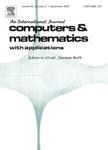版权所有:内蒙古大学图书馆 技术提供:维普资讯• 智图
内蒙古自治区呼和浩特市赛罕区大学西街235号 邮编: 010021

作者机构:Univ Stuttgart Inst Parallel & Distributed Syst Univ Str 38 D-70174 Stuttgart Germany Tech Univ Munich Dept Comp Sci Boltzmannstr 3 Garching Germany Delft Univ Technol Fac Aerosp Engn Kluyverweg 1 NL-2629 HS Delft Netherlands
出 版 物:《COMPUTERS & MATHEMATICS WITH APPLICATIONS》 (计算机与数学及其应用)
年 卷 期:2016年第71卷第4期
页 面:869-891页
核心收录:
学科分类:08[工学] 0701[理学-数学] 0812[工学-计算机科学与技术(可授工学、理学学位)]
基 金:Institute for Advanced Study (IAS) of the Technische Universitat Munchen Aerospace Engineering department at the Delft University of Technology SPPEXA, the German Science Foundation Priority Programme 1648-Software for Exascale Computing
主 题:Fluid-structure interaction Partitioned simulation Parallel coupling methods Quasi-Newton High performance computing
摘 要:Within the last decade, very sophisticated numerical methods for the iterative and partitioned solution of fluid structure interaction problems have been developed that allow for high accuracy and very complex scenarios. The combination of these two aspects - accuracy and complexity - demands very high computational grid resolutions and, thus, high performance computing methods designed for massively parallel hardware architectures. For those architectures, currently used coupling methods, which mainly work with a staggered execution of the fluid and the structure solver, i.e., the execution of one solver after the other in every outer iteration, lead to severe load imbalances: if the flow solver, e.g., scales on a very large number of processors but the structural solver does not due to its limited amount of data and required operations, almost all processors assigned to the coupled simulations are idle during the execution of the structure solver. We propose two new iterative coupling methods that allow for the simultaneous execution of flow and structure solvers. In both cases, we show that pure fixed-point iterations based on the parallel execution of the solvers do not lead to good results, but the combination of parallel solver execution and so-called quasi-Newton methods yields very efficient and robust methods. Those methods are known to be very efficient also for the stabilization of critical scenarios solved with the standard staggered solver execution. We demonstrate the competitive convergence of our methods for various established benchmark scenarios. Both methods are perfectly suited for use with black-box solvers because the quasi-Newton approach uses solely input and output information of the solvers to approximate the effect of the unknown Jacobians that would be required in a standard Newton solver. (C) 2016 Elsevier Ltd. All rights reserved.